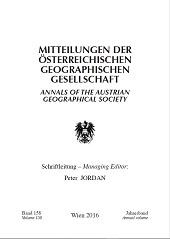
Mitteilungen der Österreichischen Geographischen Gesellschaft Band 158/2016, pp. 109-132, 2019/05/27
158. Jg. (Jahresband), Wien 2016

This paper investigates the concept of social mix(ing), which has gained importance as a key theme in urban planning processes, particularly in the last decade. Following social mixing strategies, segregated and gated communities should be avoided, social cohesion and economic opportunities should develop. Although the term of social mix( ing) is omnipresent in strategic planning documents and seems to be widely studied by urban scientists, the term is still fuzzy and elusive. There aren’t any valid parameters to measure socially mixed areas nor any norms to define such areas. This article examines the social dimensions and the contexts behind the leitmotif “social mixing” and how it is used by planning authorities. Moreover, it will deconstruct the concept of social mixing by demonstrating social mixing practices of residents in the 15th Viennese district Rudolfsheim- Fünfhaus. By focusing on the daily interactions of residents with their neighbourhood the concept of social mixing as a leitmotif will be investigated. Furthermore, these daily practices show us where and how people from Rudolfsheim-Fünfhaus interact with each other and help to analyse why people don’t socially interact.
Keywords: Social mix(ing), urban planning, gentrification, housing, diversity, social interactions, neighbourhood change, social cohesion